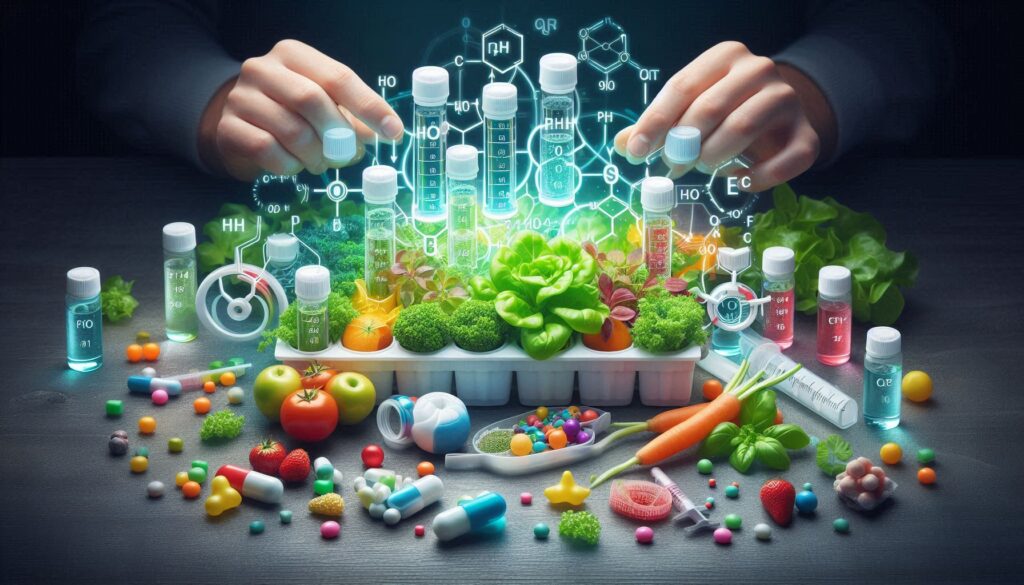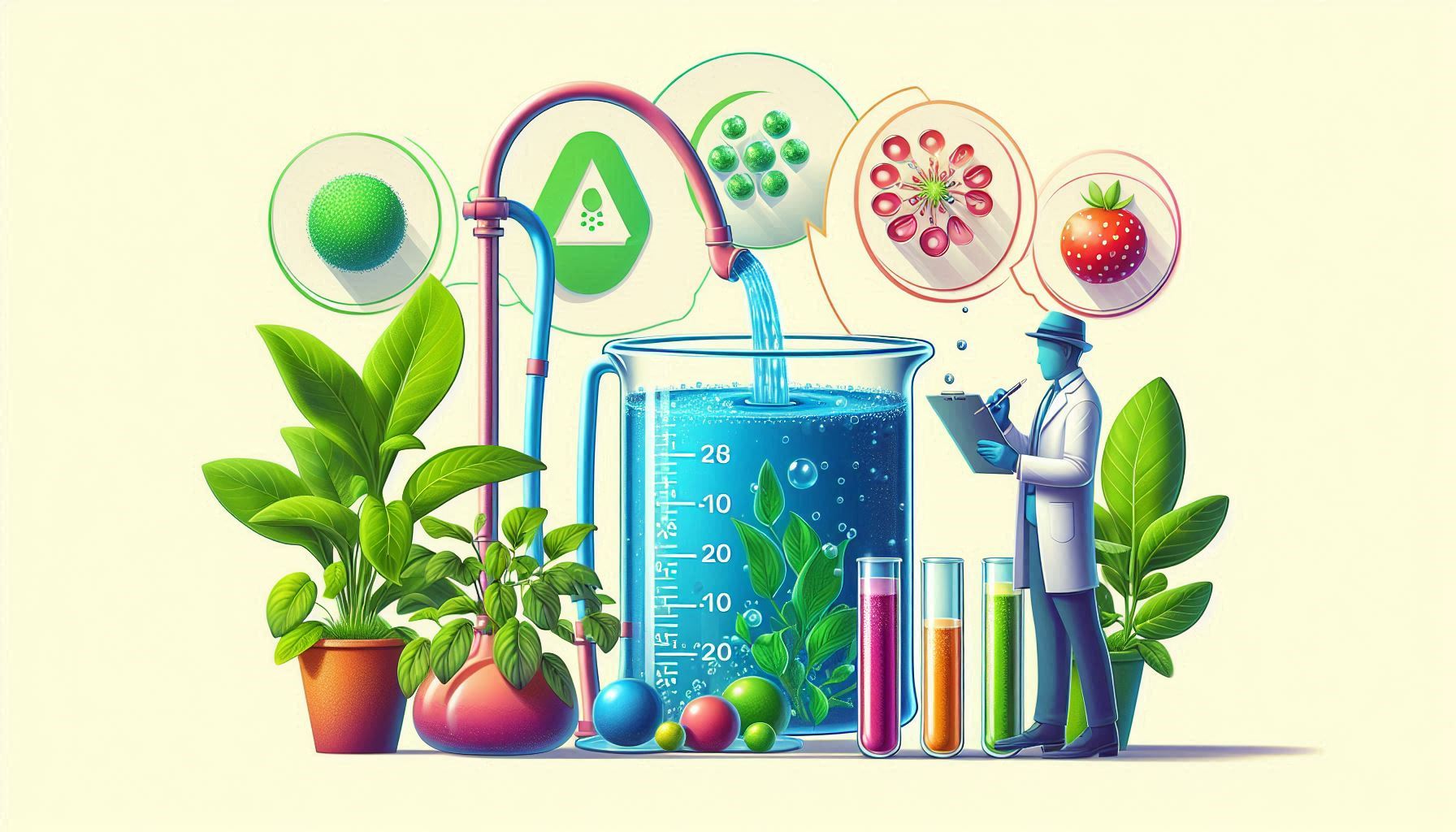Hydroponic gardening offers a sustainable and efficient way to grow plants without soil, using nutrient solutions to provide essential elements for growth. One critical aspect of hydroponic gardening is maintaining the correct pH and Electrical Conductivity (EC) levels in the nutrient solution. In this article, we will explore the importance of pH and EC levels in hydroponic systems, how to measure and adjust these levels, and the impact they have on plant growth and overall success in hydroponic gardening.
Understanding pH in Hydroponic Gardening
pH is a measurement of the acidity or alkalinity of a solution, including the nutrient solution used in hydroponic systems. The pH scale ranges from 0 to 14, with 7 being neutral. A pH below 7 is considered acidic, while a pH above 7 is alkaline. In hydroponic gardening, maintaining the correct pH level is crucial for optimal nutrient uptake by plants. Different nutrients are absorbed best at specific pH ranges, so maintaining the correct pH ensures that plants can access the nutrients they need for healthy growth.
The ideal pH range for most hydroponic plants is between 5.5 and 6.5. This slightly acidic range allows for the optimum uptake of essential nutrients such as nitrogen, phosphorus, and potassium. If the pH strays outside this range, nutrient availability can be compromised, leading to nutrient deficiencies or toxicities that can stunt plant growth or even cause plant death.
Measuring and Adjusting pH Levels in Hydroponic Systems

To ensure plants receive the right balance of nutrients, it is essential to regularly monitor and adjust the pH levels of the nutrient solution in hydroponic systems. pH levels can be tested using a pH meter or pH test strips, which provide a quick and accurate measurement of the solution’s acidity or alkalinity.
If the pH of the nutrient solution is too high (alkaline), acidic substances such as phosphoric acid or citric acid can be added to lower the pH. If the pH is too low (acidic), alkaline substances such as potassium hydroxide or calcium hydroxide can be added to raise the pH. It is important to make gradual adjustments and retest the pH after each addition to avoid drastic changes that could shock plants.
Maintaining stable pH levels in hydroponic systems is crucial for plant health and overall growth. Regular monitoring, adjusting, and buffering of the nutrient solution will help ensure that plants have access to the essential nutrients they need to thrive.
Understanding Electrical Conductivity (EC) Levels in Hydroponic Gardening
Electrical Conductivity (EC) is a measurement of the concentration of nutrient salts dissolved in the nutrient solution. EC levels indicate the overall strength of the nutrient solution and its ability to supply essential nutrients to plants. Monitoring and adjusting EC levels is essential in hydroponic gardening to ensure that plants receive the right balance of nutrients for healthy growth.
Different plants have varying nutrient requirements, so it is important to tailor the nutrient solution’s EC levels to suit the specific needs of the plants being grown. EC levels are typically measured in millisiemens per centimeter (mS/cm) or microsiemens per centimeter (μS/cm), with different crops requiring different EC ranges for optimal growth.
Measuring and Adjusting EC Levels in Hydroponic Systems
EC levels can be measured using an EC meter or TDS (Total Dissolved Solids) meter, which provide a reading of the nutrient solution’s conductivity. Monitoring EC levels allows growers to adjust the nutrient solution’s strength by adding more or less nutrient solution concentrate to achieve the desired EC level for the specific plant being grown.
If EC levels are too low, it indicates that the nutrient solution is diluted and may not be providing enough nutrients for plant growth. In this case, adding more nutrient solution concentrate can increase the EC level to the optimal range. On the other hand, if EC levels are too high, it suggests that the nutrient solution is too concentrated and may risk causing nutrient toxicity in plants. Diluting the nutrient solution with water can help lower the EC level to the desired range.
Maintaining the correct EC levels in hydroponic systems is essential for providing plants with the nutrients they need for healthy growth and maximizing yields. Regular monitoring and adjustment of EC levels based on plant requirements will help ensure that plants receive the optimal nutrient balance for strong and vigorous growth.
Impact of pH and EC Levels on Plant Growth in Hydroponic Systems
The pH and EC levels of the nutrient solution play a crucial role in plant growth and overall success in hydroponic gardening. Maintaining the correct pH level ensures that plants can efficiently absorb essential nutrients, while monitoring and adjusting EC levels provide plants with the right balance of nutrients for healthy growth.
When pH levels are outside the optimal range, nutrient availability can be compromised, leading to deficiencies or toxicities that can impact plant growth and yield. For example, a pH that is too high can result in the lockout of certain nutrients, while a pH that is too low can lead to nutrient imbalances that stunt plant growth.
Similarly, maintaining appropriate EC levels is essential for providing plants with the right balance of essential nutrients. If EC levels are too low, plants may suffer from nutrient deficiencies and slow growth, while high EC levels can lead to nutrient imbalances and toxicity that can harm plant health.
By maintaining stable pH and EC levels in hydroponic systems, growers can ensure that plants have access to the nutrients they need for healthy growth and optimal yields. Monitoring these key parameters regularly and making adjustments as needed will help promote strong, vigorous growth and maximize the success of hydroponic gardening endeavors.
In conclusion, understanding and managing pH and EC levels are vital aspects of successful hydroponic gardening. Maintaining the correct pH range ensures optimal nutrient uptake by plants, while monitoring and adjusting EC levels provide plants with the right balance of essential nutrients for healthy growth.
By regularly testing and adjusting pH and EC levels in the nutrient solution, growers can ensure that plants receive the nutrients they need to thrive and achieve maximum yields. Investing time and effort into maintaining stable pH and EC levels will help promote strong, healthy plant growth and success in hydroponic gardening endeavors.

